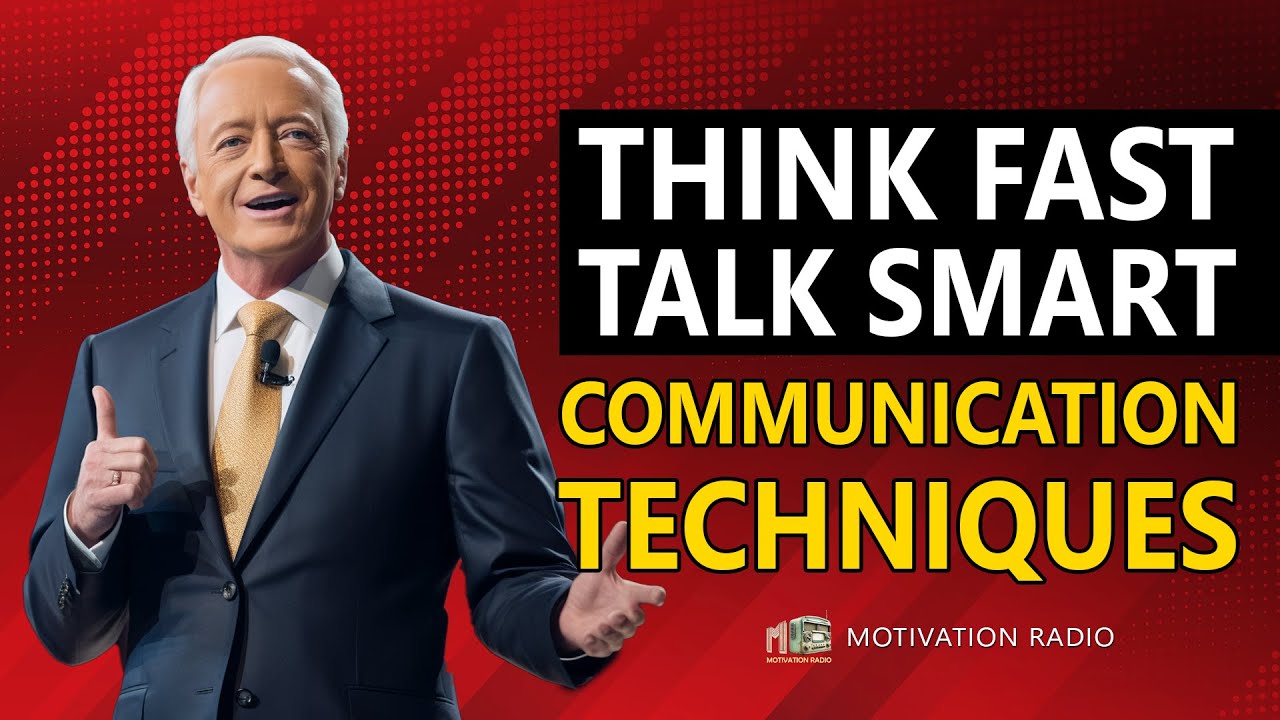Listening Skills Training Video for the Workplace
Summary
TLDRActive listening is essential for workplace success, fostering trust and positive interactions with colleagues and customers. It enhances job satisfaction and communication clarity, crucial for resolving conflicts and misunderstandings efficiently. By actively engaging with others, one can also stimulate creativity and innovation, leading to more effective problem-solving and productivity.
Takeaways
- 👂 Active listening is crucial for building better connections in the workplace, as it demonstrates genuine interest and a desire to understand others.
- 🔐 It helps to build trust with customers and colleagues, showing that their perspective is valued, leading to more positive interactions.
- 📈 Active listening can improve job satisfaction, as employees who feel heard and valued are more likely to be satisfied with their work and organization.
- 💬 It enhances communication by ensuring that all parties understand each other's needs and are working towards the same goal.
- 👥 Active listening is particularly useful in dealing with difficult or anxious individuals, helping to resolve conflicts and promote constructive problem-solving.
- 🗣️ An example of passive listening is when someone asks for repetition, which can be frustrating, whereas active listening seeks clarification during the initial conversation.
- 🤝 Active listening eliminates the need for further clarification, reducing misunderstandings and saving time, which can increase productivity.
- 🚫 Misunderstandings can be avoided by paying attention to details, as shown in the example of the customer who was promised a red seat for their bike.
- 💡 Active listening can boost creativity and innovation by gaining new insights and perspectives from others, which can lead to more creative solutions.
- 🧩 Listening to different perspectives can sharpen problem-solving skills by identifying new solutions that might not have been considered otherwise.
Q & A
What is active listening and why is it important in the workplace?
-Active listening is the process of being fully aware and concentrating on what is being said to you, rather than just passively hearing the speaker. It is important in the workplace because it helps build trust, improves job satisfaction, enhances communication, and can lead to more positive and productive interactions with customers and colleagues.
How does active listening promote a feeling of being heard and valued?
-Active listening promotes a feeling of being heard and valued by showing genuine interest in what the speaker is saying, making it clear that their perspective is valued and important.
What impact can active listening have on job satisfaction among employees?
-Studies show that when employees feel heard and valued through active listening, they are more likely to feel satisfied with their job and the organization they work for.
How can active listening improve communication between parties in a workplace setting?
-Active listening ensures that all parties easily understand the needs of the person they are speaking with, working towards the same goal and reducing the risk of misunderstandings.
How does active listening help in dealing with difficult or anxious customers or colleagues?
-Active listening can help deescalate conflicts and lead to more constructive problem-solving by seeking clarification at the time of the initial conversation and reducing the need for further clarification later on.
What is the difference between a passive listener and an active listener in terms of handling customer complaints?
-A passive listener may need to ask for repetition or clarification, which can be frustrating for customers. An active listener, on the other hand, seeks clarification at the time of the initial conversation, reducing the need for repetition and the risk of misunderstandings.
Can you provide an example of how active listening can help resolve a customer's issue more effectively?
-An active listener would pick up on extra details provided by the customer, such as the color of a promised item, and take immediate action to check for the correct item, reducing the need for the customer to return and clarify their needs.
How does active listening contribute to increased productivity in the workplace?
-Active listening not only saves time by reducing the need for clarification and repetition but also leads to increased productivity by helping to deescalate conflicts and find effective solutions more quickly.
What role does active listening play in boosting creativity and innovation?
-Active listening can help boost creativity and innovation by gaining new insights and perspectives from others, which can lead to more creative and innovative solutions and sharpen problem-solving skills.
How can active listening help in identifying new solutions to problems?
-By actively listening to different perspectives, one can identify new solutions to problems that they may not have thought of before, enhancing the overall problem-solving process.
What is the significance of seeking clarification during the initial conversation in active listening?
-Seeking clarification during the initial conversation in active listening ensures that all parties have a clear understanding of each other's needs and expectations, which can prevent miscommunication and the need for further clarification later on.
Outlines

Cette section est réservée aux utilisateurs payants. Améliorez votre compte pour accéder à cette section.
Améliorer maintenantMindmap

Cette section est réservée aux utilisateurs payants. Améliorez votre compte pour accéder à cette section.
Améliorer maintenantKeywords

Cette section est réservée aux utilisateurs payants. Améliorez votre compte pour accéder à cette section.
Améliorer maintenantHighlights

Cette section est réservée aux utilisateurs payants. Améliorez votre compte pour accéder à cette section.
Améliorer maintenantTranscripts

Cette section est réservée aux utilisateurs payants. Améliorez votre compte pour accéder à cette section.
Améliorer maintenantVoir Plus de Vidéos Connexes

Pelaporan Kerja - Dasar Komunikasi

Diversity in Tourism - Cross Cultural Communication

Escuta ativa empática | Socioemocional de Educadores | Tradução em Libras

What is Workplace Ethics?

4 Work Ethics & Values Part 1

Brian Tracy Best Advice on Mastering The Art Of Effective COMMUNICATION | How Successful People Talk
5.0 / 5 (0 votes)
